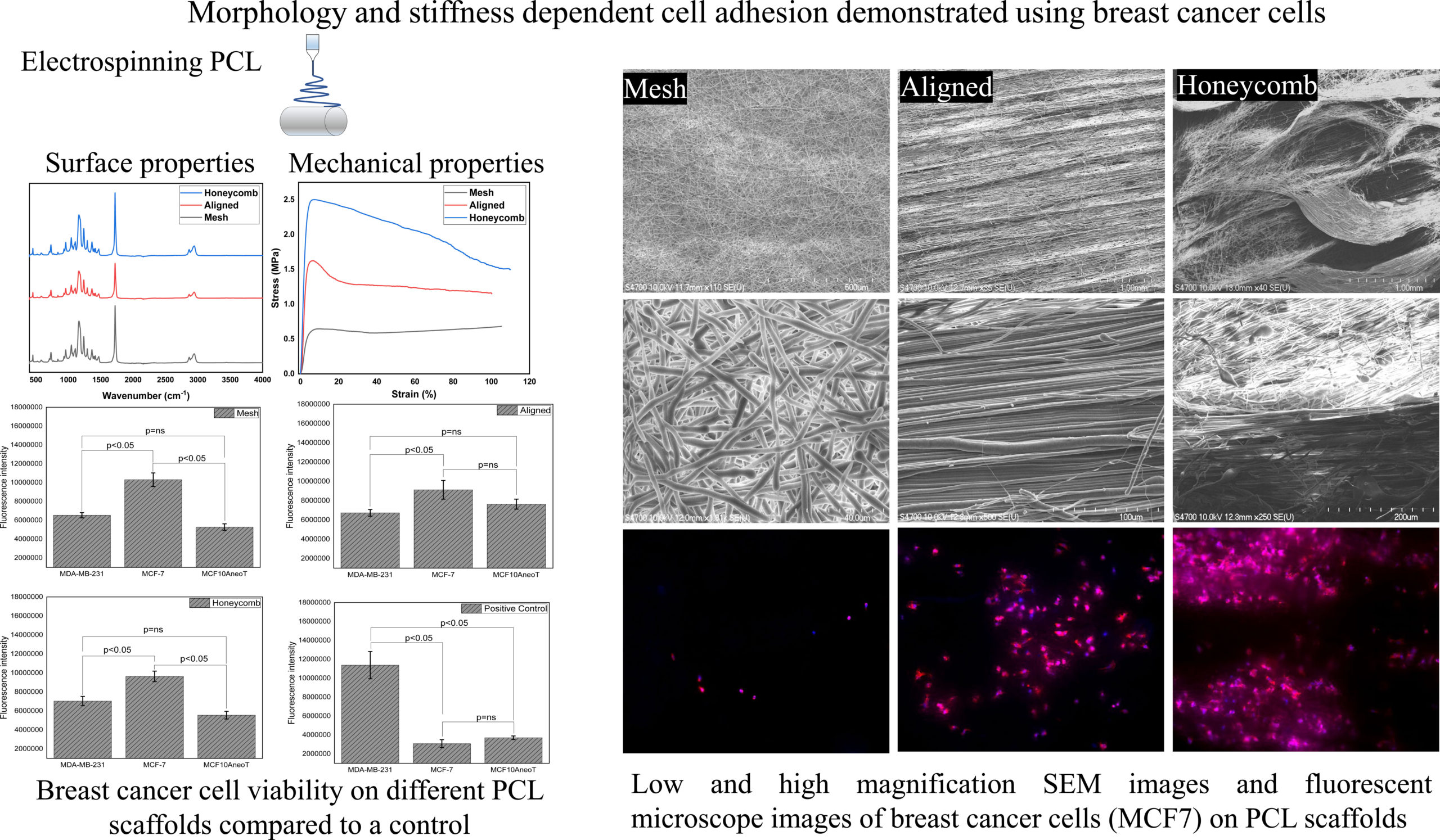
Artificially engineering the tumor microenvironment in vitro as a vital tool for understanding the mechanism of tumor progression. In this study, we developed three-dimensional cell scaffold systems with different topographical features and mechanical properties but similar surface chemistry. The cell behavior was modulated by the topography and mechanical properties of the scaffold. Methods: Adenocarcinoma (MCF7), triple-negative (MDA-MB-231) and premalignant (MCF10AneoT) breast cancer cells were seeded on the scaffold systems. The cell viability, cell-cell interaction and cell-matrix interactions were analyzed. The preferential growth and alignment of specific population of cells were demonstrated. Results: Among the different scaffolds, triple-negative breast cancer cells preferred honeycomb scaffolds while adenocarcinoma cells favored mesh scaffolds and premalignant cells preferred the aligned scaffolds. Conclusions: The 3D model system developed here can be used to support growth of only specific cell populations or for the growth of tumors. This model can be used for understanding the topographical and mechanical features affecting tumorigenesis, cancer cell growth and migration behavior of malignant and metastatic cancer cells.

Engineered Three-Dimensional Scaffolds Modulating Fate of Breast Cancer Cells Using Stiffness and Morphology Related Cell Adhesion
Sign-in or become an IEEE member to discover the full contents of the paper.
